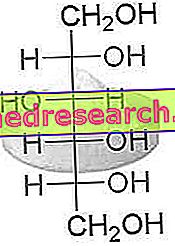Generality
Cashews, or cashew nuts, are known throughout the world with different nouns: acajou or cashew nuts, casher nuts, noix d'acajou, noix d'Arabie, anacarde occidental, Tintennusse, Mahagoininnusse, Mahagoni Kernel, Kernel westindische, elefanten lause.

NB . There is also a variety of oriental cashews called Senecarpus anacardium Linn. f. ; this species, native to India, produces fruits similar to the varieties of the Western Anacardium Linn . which have the same nutritional characteristics.
Cashews are small bean-like nuts (reniform), about 2-4cm long. The seed, closed inside the shell, is white in color and is characterized by a sweet and oleaginous taste; generally, in Europe, cashews are eaten toasted, either alone or as a pastry and chocolate ingredient; Cashews are also known as "Indian mandorline" or "anacarde".
Role in the Diet
Food safety
Nutritional composition of Cashews (food composition tables - INRAN) | |||||||||||||||||||||||||||||||||||||||||||||||||||||||||||||
 | |||||||||||||||||||||||||||||||||||||||||||||||||||||||||||||
Nutritional values (per 100 g of edible portion) | |||||||||||||||||||||||||||||||||||||||||||||||||||||||||||||
* Cashews contain an amino acid pool that is characterized by the prevalence of ac. glutamic, arginine, aspartic acid and leucine, while tryptophan, methionine and cystine are contained to a lesser extent. | |||||||||||||||||||||||||||||||||||||||||||||||||||||||||||||
With regard to the food safety of the cashews, it is essential to specify immediately that, by consuming the seeds that are private in the shell, it is not uncommon for some fragments to remain adherent to the edible fraction; these residues, which contain cardolo (a yellowish oily liquid that browns in the air, very toxic, with a rubefacient and blistering action), are to be considered harmful to human health.
Cashew Oil
Cashews are considered a "prized" food, by virtue of their respective unsaturated lipid content (extractable as cashew oil ) which represents about 49% of the total weight; Cashew oil is, from a gustatory and organoleptic point of view, very similar to almond oil and lends itself well to food consumption. Cashew oil (the raw raw material coma) is the only food, together with palm oil, to contain the delta form of vitamin E ( δ-tocopherol ). Cashews also contain 35% protein (medium biological value) and 16% total carbohydrates.
We recall once again that, from the GUSCIO of the cashews (and NOT FROM the SEED!), We get a harmful and even caustic oil (cashew oil - acacia oil) containing: anacardic acid (90%) and cardolo (10% ). From the roots of the cashew trees a rubbery exudate is obtained, comparable to the gum arabic.
What not everyone knows is that the seeds (achenes) of the western Anacardium Linn . and of Senecarpus anacardium Linn. f. They are NOT the only portion of the plant used for food purposes.
The peduncle of the achene itself ( pomme d'acajou ) is edible and is hypertrophic, fleshy, pear-shaped and red-colored; it is frequently used for the production of preserves and, if fermented, produces a characteristic distillate.
Frequency of Consumption
Cashews are extremely caloric foods, of which (as already mentioned) 49% of the weight is lipid; the latter bring about 70% of the total energy of the achene (while only 10% of the calories derive from proteins and 20% from carbohydrates). The prevalence of fatty acids is monounsaturated (like those of virgin olive oil) and, of course, cashews do not contain cholesterol.
Excellent amounts of iron (Fe), potassium (K) and phosphorus (P) are observed, while the intake of vitamins would not justify their frequent consumption.
NB . Cashews, in addition to having a frequency of consumption limited to 2-3 times a week (falling into the category of dried fruit), should be contextualized in a low-fat diet (of which they are rich) and the relative portions should not exceed 15-20g of edible portion (90-120kcal).
Watch the video
X Watch the video on youtube



